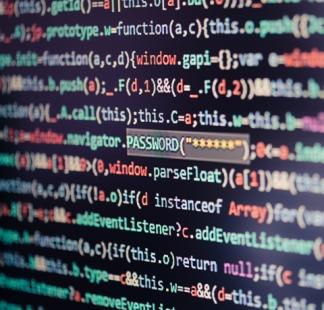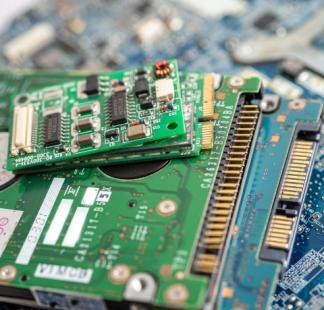- Roxana WIDMER-ILIESCU
- Rouda AlAmir Ali
Introductory
Event Organizer(s)

Description
This course discusses building inclusive and digitally accessible environments and communities, underlining the importance of digital inclusivity and accessibility for all people, empowered through ICTs regardless of gender, age, ability, or context.
The target audience for this course is: all ITU members, policy-makers and decision-makers as well as any stakeholder or person interested in gaining knowledge on this topic. To ensure inclusive learning, this online self-paced training course has been designed and developed in digitally accessible formats and is, therefore, accessible to all people, including persons with disabilities, such as blind persons or persons with visual disabilities, deaf person and/or persons with hearing impairment.
No prior knowledge or qualification on the subject matter is required to complete this training course.
Upon completion of this course, learners will:
- Develop their understanding of the key role of ICT/digital accessibility to ensure that no one is left behind in the digital inclusion process.
- Develop their understanding of how digital inclusion, encompassing accessibility requirements and standards, and the principles of universal design are fundamental in the process of building inclusive environments and communities.
- Develop their understanding of the importance of the need to mainstream digital accessibility from the design stage when it comes to building smart cities, environments, and communities.
- Develop their understanding of the difference between the key concepts within ICT accessibility, such as access, affordability, accessibility, appropriation and accessible ICTs.
- Be informed about the existence of related best practices. • Know where to find the relevant tools and resources necessary to increase knowledge on how to build inclusive and digitally accessible environments and communities that empower all people.
- Gain knowledge on how to implement inclusive smart cities, environments and communities.
This self-paced training course is designed to be inclusive for everyone interested in the subject matter and can be undertaken by all persons, including those with disabilities, as it has been developed in digitally accessible formats. This course is delivered through a player which supports several accessibility features. All text is read out by a state-of-the-art text to speech engine. Volume can be adjusted, and closed captions are available. The course player works with JAWS 16 and later, NVDA, as well as VoiceOver and TalkBack screen readers in a range of browsers. This training course comprises four modules. Each module consists of content, supporting images and multimedia, including infographics and videos aiming to increase the learner’s knowledge and understanding of inclusive smart sustainable cities, environments and communities. Additionally, several case studies are presented to demonstrate how cities are using technology to provide solutions to urban problems and how to ensure those solutions are accessible for all. Recommendations and guidelines on how to achieve inclusive smart cities are also offered.
ADVICE FOR USERS WITH DISABILITIES
This course had been designed to be accessible for persons with disabilities. It is developed using the Articulate Storyline software in HTML5. The course is designed to be compatible with the JAWS, NVDA, VoiceOver and TalkBack screen readers used with Internet Explorer, Edge, Chrome, Firefox and Safari. The course uses a player which has the following buttons: menu, play, progress bar, repeat, closed captions, next and previous. The controls you will use the most are the play and next buttons. The course contains its own audio. It is strongly recommended that screen reader users mute this audio by going to the volume control on the player interface and muting the audio. All text and any images that contain information are accessible. We recommend using the tab key to navigate through the content of each slide and to use the player controls to move between slides. There are quizzes in the course. All questions must be answered correctly before progressing to the next topic. We recommend using the tab key to navigate through the radio button choices and using the space bar to select a choice in the quiz. When you submit an answer, you must tab to the onscreen control that will either move you to the next slide or allow you to answer the question again.
At the end of each module, learners will answer several quiz questions to reinforce and assess knowledge. Each question must be answered correctly before moving on to the next. You may attempt each question as many times as you wish. At the end of the course, the learner will answer ten questions. Each question carries ten marks. A score of 80 per cent (80%) is required to obtain an ITU badge. Subject to successful validation of knowledge, a Completion badge will be awarded by the International Telecommunication Union (ITU). Please note that quizzes within the course do not contain their own audio or captions.
The training course is divided into four modules and cover the following topics:
Module 1: Inclusive and digitally accessible environments and communities: This first module helps to set the scene for the training course. We are witnessing an acceleration of urbanization processes worldwide in addition to the increased use of technologies to tackle urban challenges. As a result, digital environments and communities are being built across various regions. This module helps to identify the characteristics which define digital environments and communities along with the elements needed to ensure that these environments are equitable, inclusive and prosperous for all.
Module 2: Key elements towards building inclusive and digitally accessible environments and communities After establishing a clear definition of what a digital environment and community are, this second module provides more information on the key elements that need to be present to ensure they are accessible and inclusive.
Module 3. Challenges and opportunities for inclusive and digitally accessible environments and communities Module three analyses how technology is being implemented to better solve specific urban challenges. It focuses on how to keep the solutions inclusive for all potential users.
Module 4: Resources to help build inclusive and digitally accessible environments and communities to meet the needs of present and future generations The fourth module identifies tools, best practices and other resources to enable all stakeholders to build inclusive and digitally accessible environments and communities capable of empowering all people.











